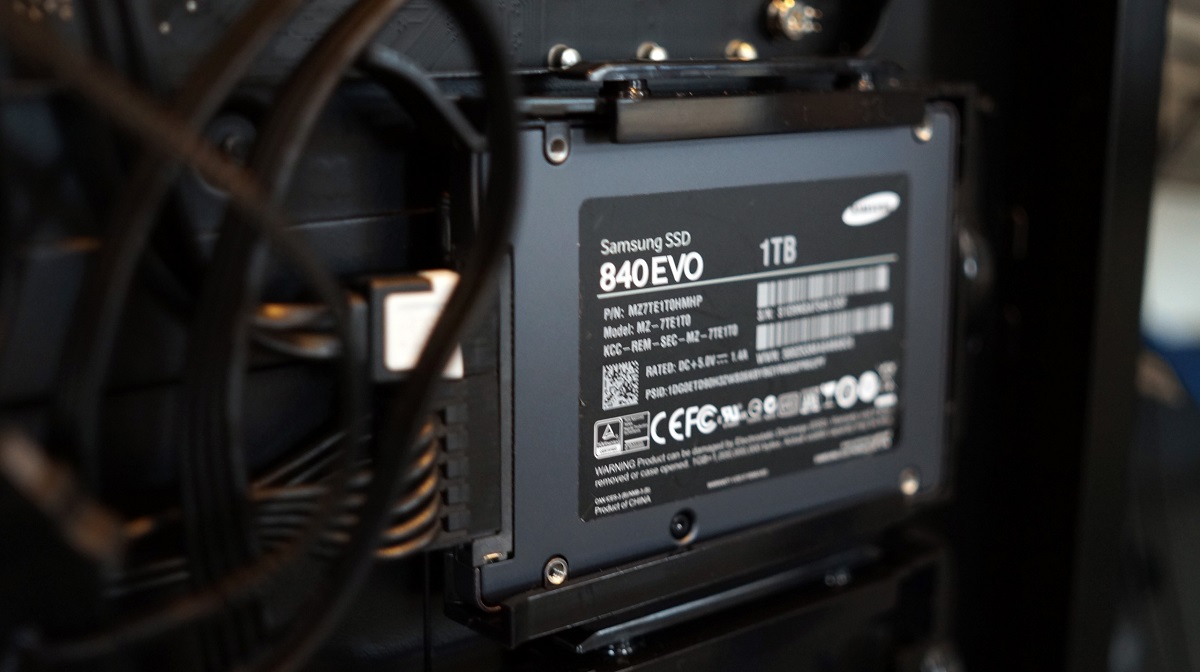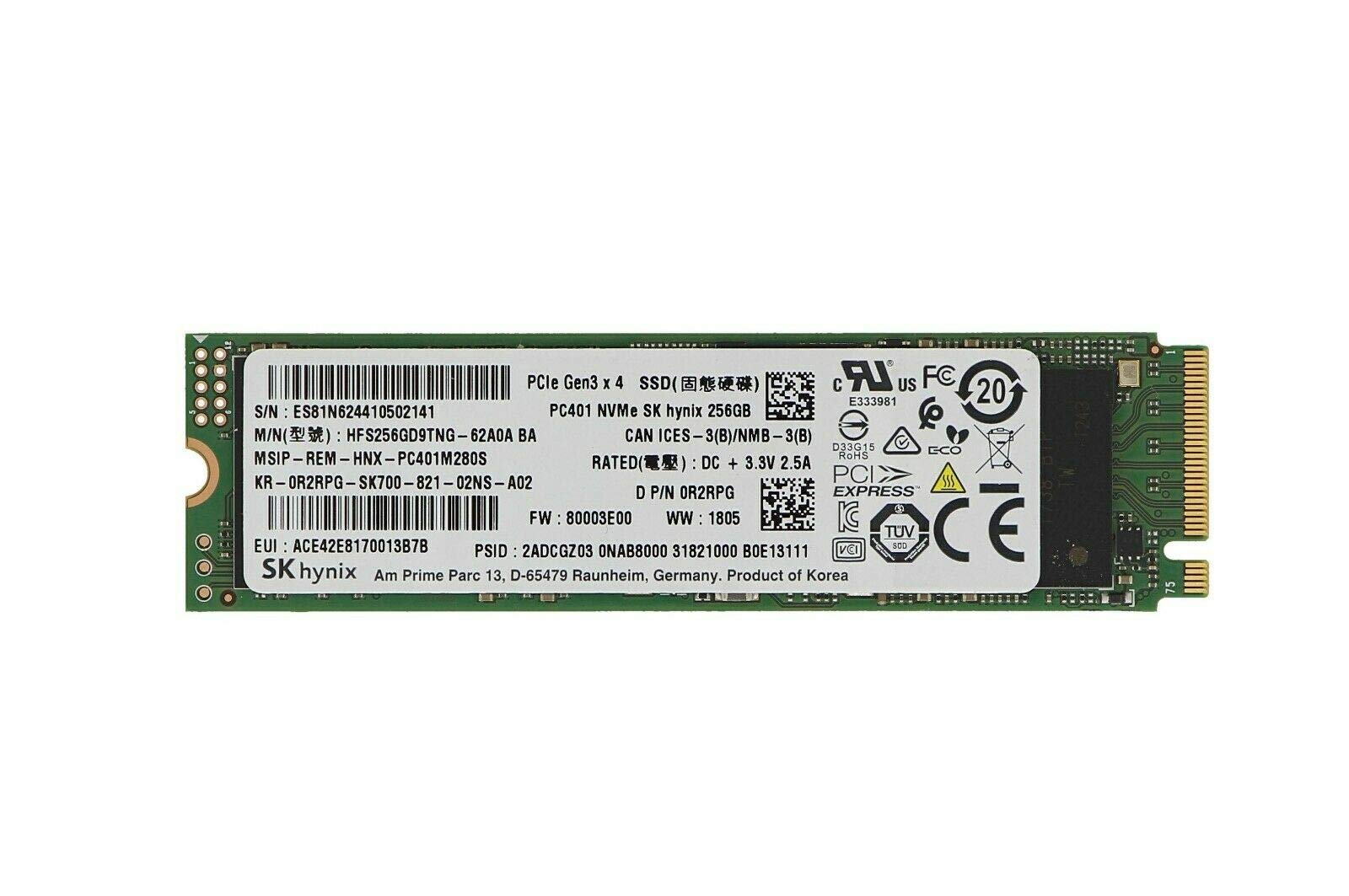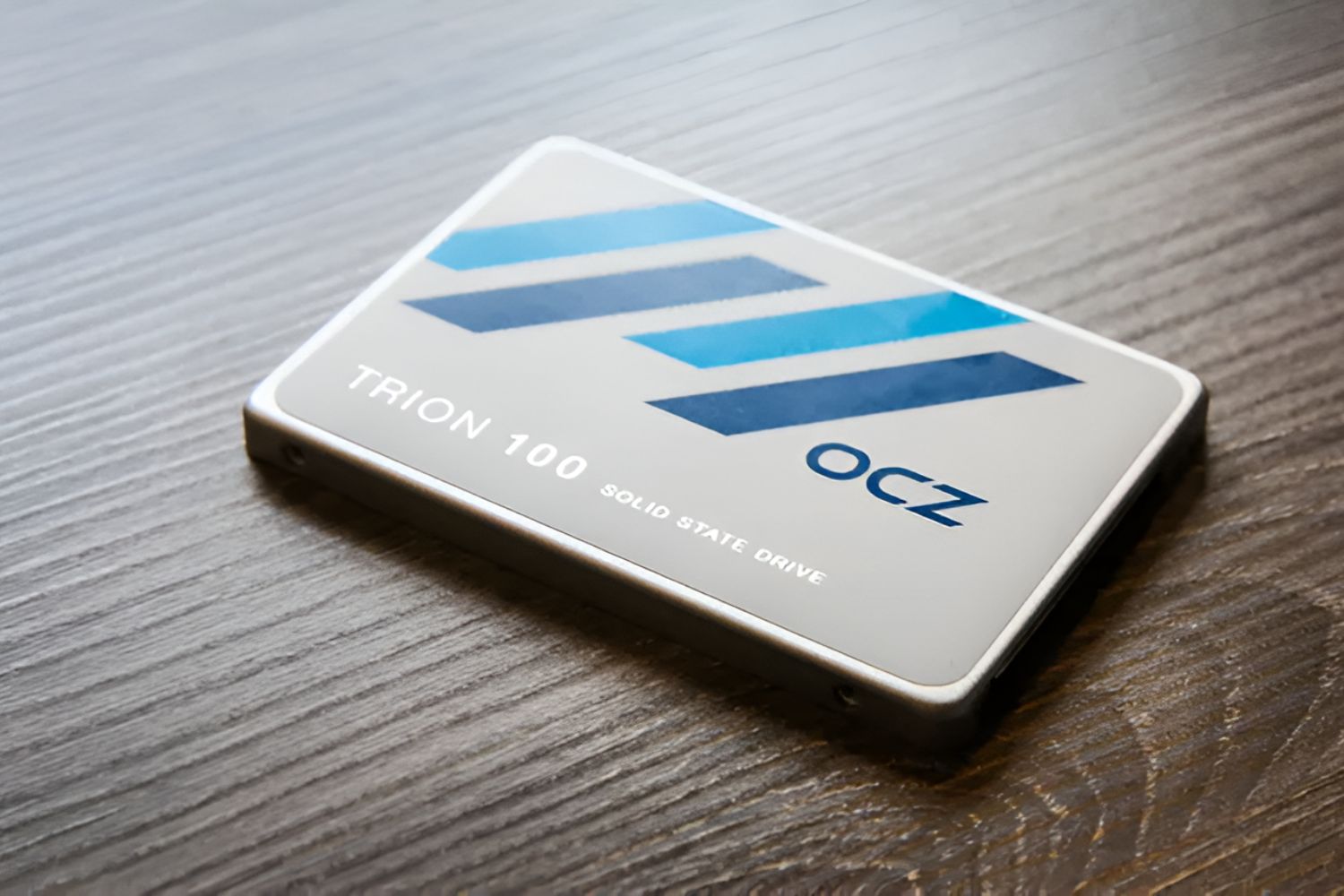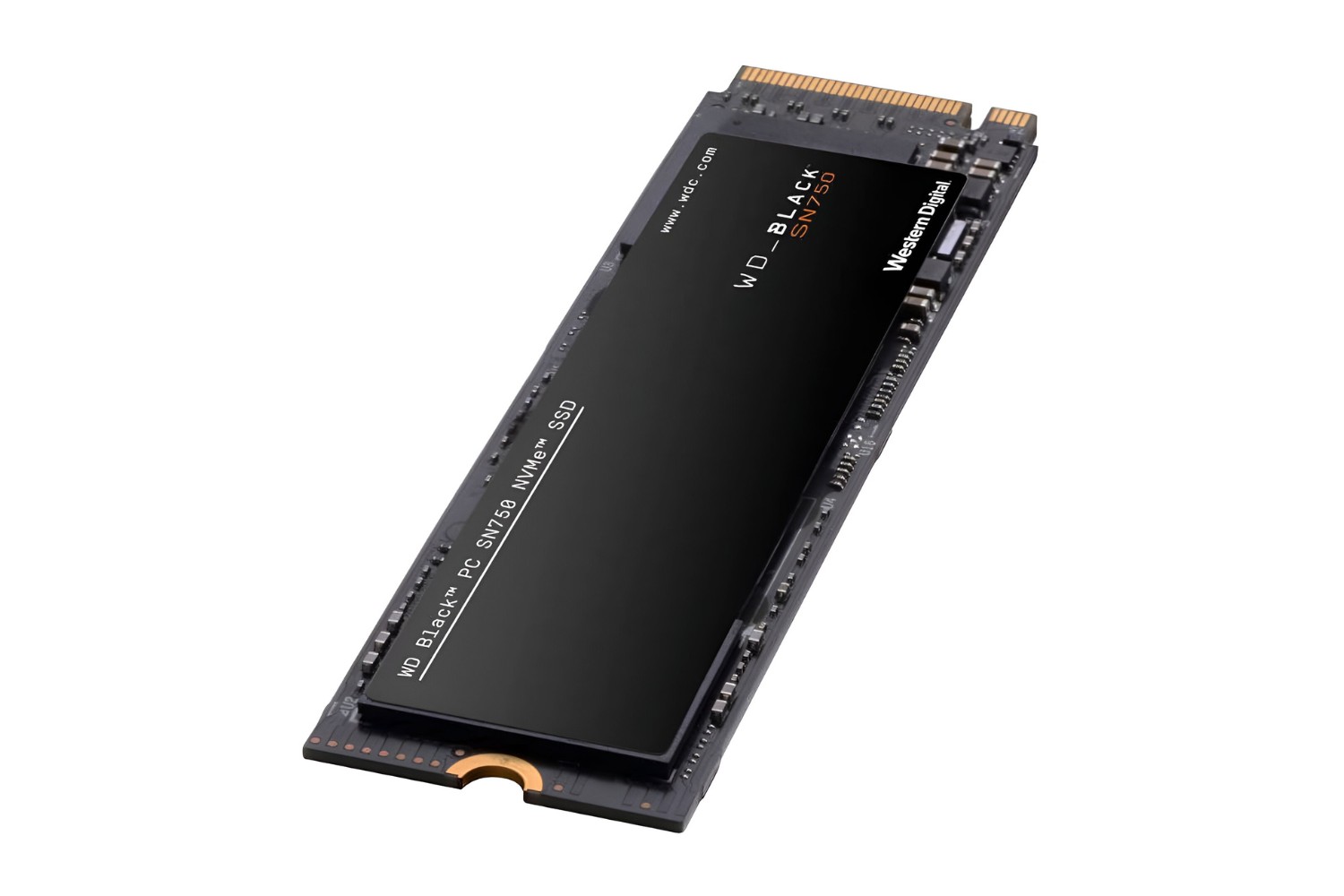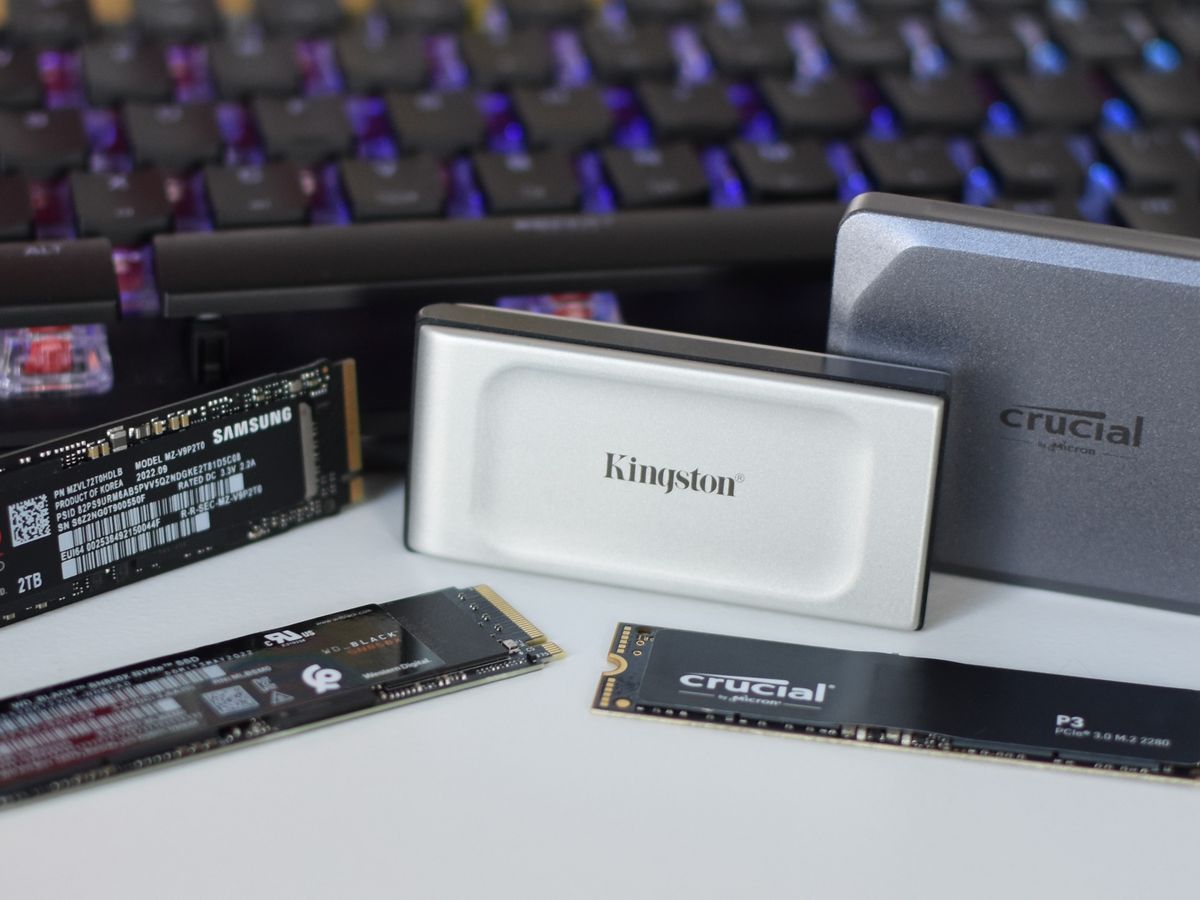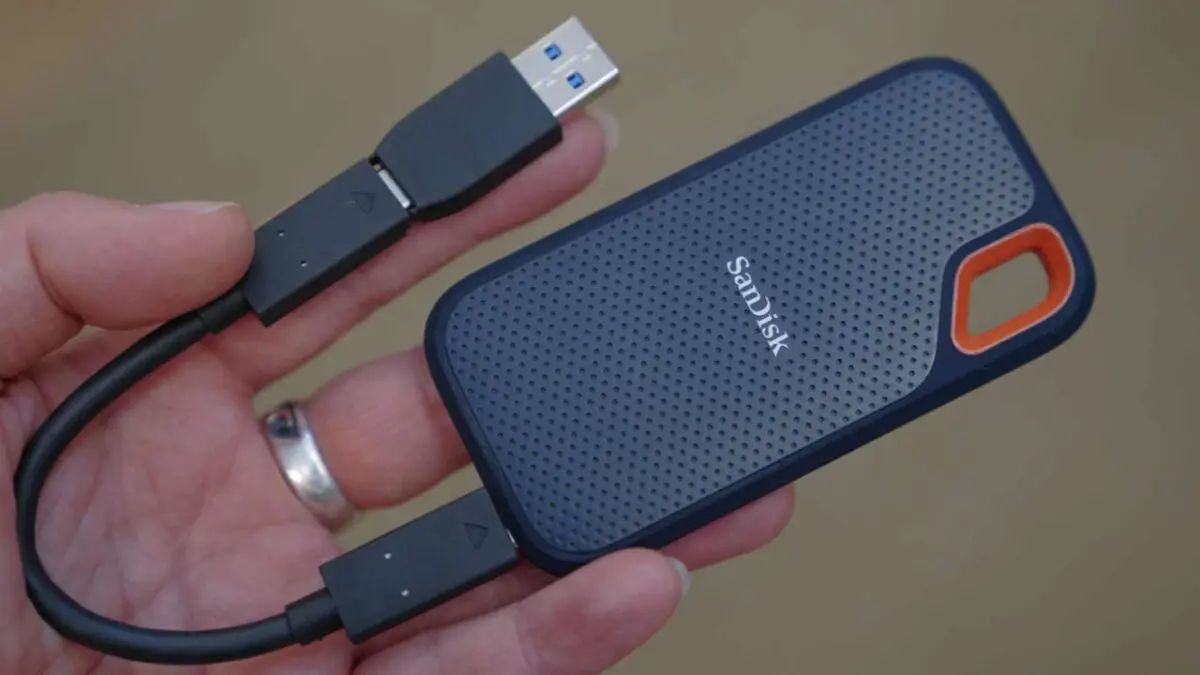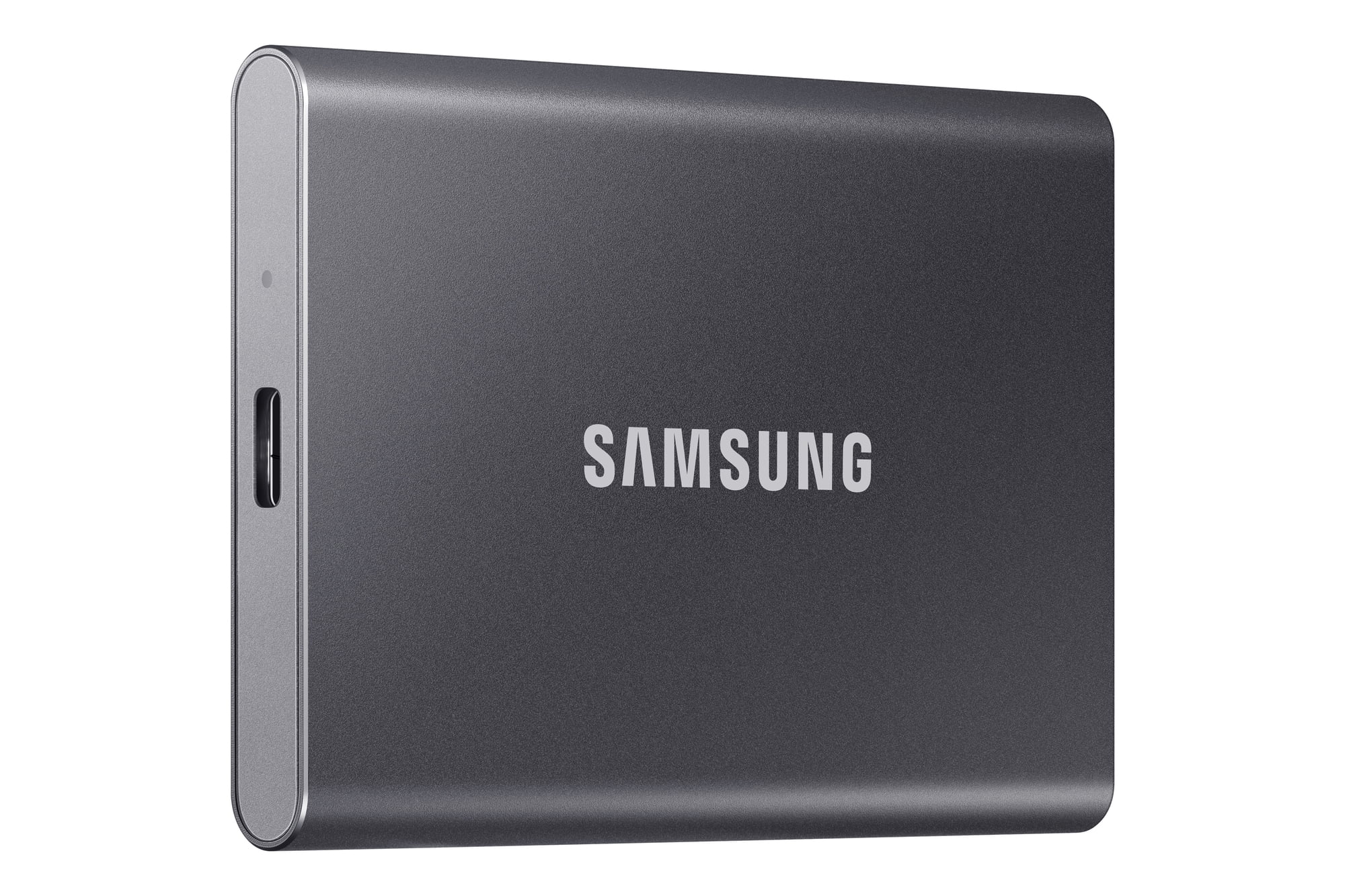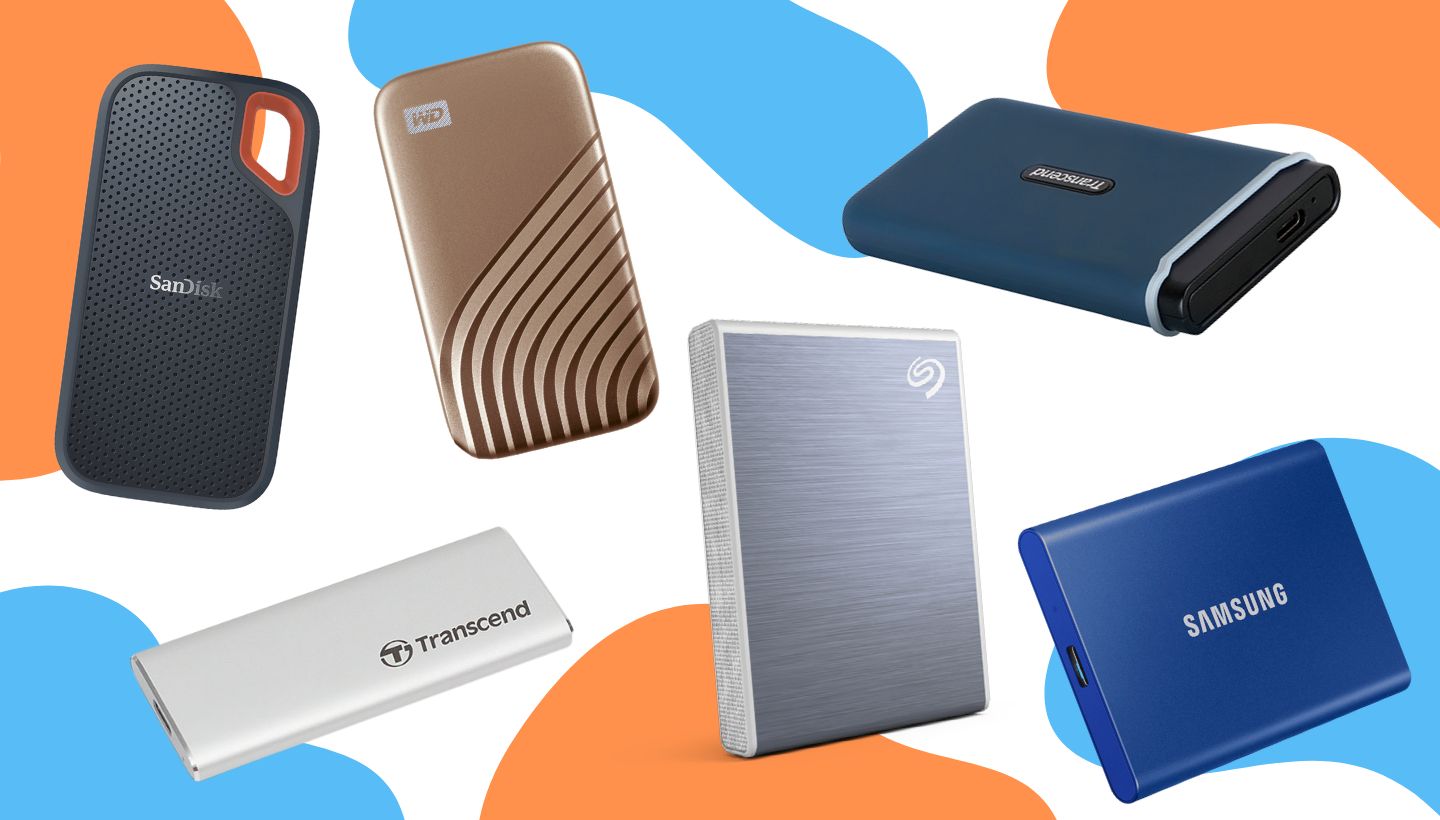Why should you use a Solid State Drive (SSD) for gaming?
When it comes to gaming, speed and performance are critical. A Solid State Drive (SSD) offers significant advantages over traditional Hard Disk Drives (HDDs) that can greatly enhance your gaming experience. An SSD uses flash memory technology, which offers faster read and write speeds, quicker load times, and improved overall system responsiveness.
One of the main benefits of using an SSD for gaming is the lightning-fast data access speeds. With an SSD, your games will load faster, allowing you to jump into the action without having to wait for long loading screens. This is especially important for open-world games or multiplayer matches where every second counts.
Additionally, SSDs provide faster installation and update times. Installing and updating games can be time-consuming, but with an SSD, the process is much quicker. You’ll spend less time waiting for installations and updates to complete, and more time playing.
Another advantage of SSDs is their durability. Unlike HDDs, SSDs do not contain any moving parts, making them less prone to failures caused by physical damage. This means that you can confidently move your gaming rig or laptop without worrying about data loss.
Furthermore, SSDs offer improved performance in games that require frequent data access, such as open-world RPGs and MMOs. With faster data retrieval, SSDs ensure a smoother gameplay experience with reduced stuttering and lag.
Apart from gaming benefits, SSDs can also enhance your overall computer usage. Booting up your system, launching applications, and performing everyday tasks become noticeably faster with an SSD, making your entire computing experience more enjoyable and efficient.
In summary, the use of a Solid State Drive (SSD) for gaming provides faster load times, quicker installation and update speeds, increased durability, and improved overall performance. By upgrading to an SSD, you can take your gaming experience to the next level and enjoy seamless gameplay without any interruptions.
Understanding the benefits of using an SSD for gaming
When it comes to gaming, having a solid understanding of the benefits that a Solid State Drive (SSD) can bring to your gaming experience is essential. While traditional Hard Disk Drives (HDDs) have been the go-to storage solution in the past, SSDs offer several distinct advantages that can greatly enhance your gaming performance.
One of the primary benefits of using an SSD for gaming is the significant improvement in load times. SSDs utilize flash memory technology, resulting in faster read and write speeds compared to HDDs. As a result, your games will load much quicker, allowing you to dive straight into the action without enduring long loading screens. This can be particularly advantageous for games with large open worlds or multiplayer titles where timing is crucial.
Not only do SSDs enhance load times, but they also offer faster installation and update speeds. Traditional HDDs have mechanical components, whereas SSDs do not. This leads to quicker installation times for games, eliminating the tedious waiting periods that come with larger game sizes. Additionally, updates and patches can be installed in a fraction of the time, ensuring you spend less time waiting and more time playing.
Another key benefit of SSDs for gaming is their durability. Since HDDs have spinning disks and moving mechanical parts, they are more susceptible to physical damage. SSDs, however, have no moving parts, making them more resilient to impacts and shocks. This means you can transport your gaming rig or laptop with peace of mind, knowing that your valuable game data is better protected.
Furthermore, SSDs offer improved performance in games that require frequent data access. Games with vast open worlds or those that heavily rely on streaming in assets will experience smoother gameplay with reduced stuttering and lag when played from an SSD. The faster data retrieval capabilities of SSDs ensure that the game can access the necessary files quickly and smoothly, providing a more seamless and immersive gaming experience.
Aside from the gaming advantages, SSDs also have broader benefits for overall computer usage. With an SSD as your system drive, your entire computer will benefit from faster boot times, snappier application launches, and improved system responsiveness. This means that not only will your gaming experience be enhanced, but your everyday computing tasks will also be quicker and more efficient.
In summary, the benefits of using an SSD for gaming are faster load times, speedier installation and update speeds, increased durability, improved performance in data-intensive games, and overall enhanced system responsiveness. By upgrading to an SSD, you can elevate your gaming experience and enjoy seamless gameplay with reduced waiting times and improved performance.
Selecting the right SSD for your gaming needs
Choosing the right Solid State Drive (SSD) for your gaming needs is crucial to maximizing your gaming performance and overall experience. With numerous options available in the market, it’s important to consider a few key factors before making your selection.
Firstly, you should consider the storage capacity of the SSD. Gaming files can be large, so it’s essential to choose an SSD with sufficient space to accommodate your game library. While smaller capacity SSDs may be more affordable, they can quickly fill up if you have a large collection of games. Aim for a capacity that offers a balance between your needs and budget.
Next, consider the type of SSD interface: SATA or NVMe. SATA SSDs are more common and generally offer good performance for gaming. They use a SATA connection and are compatible with most gaming systems. NVMe SSDs, on the other hand, offer even faster speeds due to their PCIe connection. If you have a newer gaming system with NVMe support, opting for an NVMe SSD can give you a significant performance boost.
When it comes to speed, pay attention to the read and write speeds of the SSD. Faster speeds translate into shorter load times and snappier overall performance. Look for SSDs with high sequential read and write speeds for faster game loading, especially if you play games with large open worlds or high-resolution textures.
Another important consideration is the durability and reliability of the SSD. Look for SSDs from reputable brands known for their reliability and long lifespan. SSDs with features like wear-leveling and error correction mechanisms can help extend the life of your drive, ensuring that your gaming data remains safe and secure.
Price is also a factor to consider when selecting an SSD. SSD prices have become more affordable over time, but they still tend to be more expensive than traditional HDDs. Set a budget and choose an SSD that offers good value for money, taking into account factors such as performance, capacity, and brand reputation.
Lastly, don’t forget to check reviews and ratings. Research online to see what other gamers have to say about the performance and reliability of the SSDs you are considering. Real-world user experiences can provide valuable insights into the pros and cons of different models.
In summary, selecting the right SSD for your gaming needs involves considering factors such as storage capacity, interface type, speed, durability, price, and user reviews. By carefully evaluating these factors, you can make an informed decision and choose an SSD that will optimize your gaming performance and provide an enjoyable gaming experience without breaking the bank.
Installing the SSD into your gaming system
Installing a Solid State Drive (SSD) into your gaming system is a relatively straightforward process that can provide a significant performance boost to your games. Whether you’re upgrading an existing system or building a new one, here are the steps to follow for a successful SSD installation.
1. Prepare your gaming system: Before installing the SSD, make sure your gaming system is powered off and disconnected from the power source. Take precautions against static electricity by grounding yourself or using an anti-static wristband.
2. Locate an available storage bay: Identify an available storage bay in your gaming system where you can mount the SSD. Most modern cases have dedicated 2.5-inch or 3.5-inch bays, which are compatible with SSDs.
3. Mount the SSD: If your SSD is in a 2.5-inch form factor, you may need to use an adapter or mounting bracket to secure it in the storage bay. Follow the manufacturer’s instructions for proper installation. For desktop systems, securing the SSD with screws or tool-less mechanisms is common.
4. Connect the necessary cables: If your system uses SATA SSDs, connect a SATA data cable from the SSD to an available SATA port on the motherboard. Additionally, connect a SATA power cable from the power supply unit to the SSD. If you’re installing an NVMe SSD, consult your motherboard’s manual to find the appropriate M.2 slot and insert the SSD accordingly. Some motherboards may require a standoff installation for proper NVMe SSD placement.
5. Secure the cables: Arrange and secure the cables to ensure they don’t interfere with other components or block airflow. Use cable management options provided by your case to create a clean and organized setup.
6. Close the system: Once the SSD is securely installed and connected, close your gaming system’s case. Make sure all screws or latches are properly tightened to ensure a stable enclosure.
7. Power on and configure the SSD: Power on your gaming system and enter the BIOS/UEFI settings by pressing the designated key during startup (usually Del, F2, or F10). In the BIOS/UEFI settings, verify that the SSD is detected. If necessary, adjust the boot order to prioritize the SSD as the primary boot device.
8. Install the operating system and drivers: If you’re using the SSD as your primary storage device, install your operating system (such as Windows, macOS, or Linux) onto the SSD. Follow the installation prompts and ensure that any necessary drivers are installed to fully utilize the SSD’s capabilities.
9. Transfer and install games: If you’re upgrading from an existing storage device, you can transfer your game files to the SSD to take advantage of its faster load times and performance. You may need to reinstall games or manually move game files to the SSD.
10. Verify functionality: After the installation process is complete, check that the SSD is functioning properly by launching games and observing improved load times and overall system responsiveness.
By following these steps, you can successfully install an SSD into your gaming system, improving game load times and overall performance. Enjoy a faster and more enjoyable gaming experience with the enhanced capabilities of an SSD!
Transferring your game files to the SSD
Once you’ve installed a Solid State Drive (SSD) into your gaming system, it’s time to transfer your game files for optimal performance and faster load times. Here are some steps to follow in order to successfully transfer your game files to the SSD.
1. Determine the location of your current game files: Most games are typically installed in a specific folder, often located in the “Program Files” directory on your existing storage device. Take note of the directory paths for each game you want to transfer.
2. Create a new folder on your SSD: Create a new folder on your SSD where you’ll move your game files. You can name this folder “Games” or any other preferred name. Make sure the folder is easily accessible and organized for easy management of your game library.
3. Copy your game files to the new folder: Navigate to the directory where your game files are currently stored on your existing storage device. Select the game files and copy them. Then, navigate to the new folder on your SSD and paste the game files into it. This process may take some time, depending on the size of the games you’re transferring.
4. Update game settings and configurations: Some games store settings and configurations in separate files. It’s important to ensure that these files are also transferred to the new folder on your SSD. Check for any associated config files or folders that may contain important game settings, and copy them to the corresponding location on the SSD.
5. Create new shortcuts: After transferring the game files, create new shortcuts on your desktop or Start menu for each game. By doing this, you’ll have easy access to your games without having to navigate through multiple folders to launch them.
6. Verify game functionality: Launch each game from the SSD and verify that it runs smoothly. Check for any errors or missing files. If you encounter any issues, double-check that all necessary files have been transferred correctly and try reinstalling the game if necessary.
7. Uninstall games from your previous storage device (optional): If you want to reclaim storage space on your previous storage device, you can uninstall the games that you’ve successfully transferred to the SSD. This step is optional but can be useful if you’re limited on space.
It’s important to note that not all games can be easily transferred by copying and pasting the game files. Some games require specific migration tools or built-in options within the game launcher to transfer game files to a different location. In such cases, refer to the game’s documentation or contact the game’s support for guidance on how to proceed with transferring your game files.
By following these steps, you can effectively transfer your game files to your new SSD. Enjoy the benefits of faster load times and smoother gameplay as you take full advantage of the improved performance provided by the SSD.
Optimizing your gaming experience with an SSD
Now that you have installed a Solid State Drive (SSD) in your gaming system, there are a few additional steps you can take to optimize your gaming experience and fully leverage the benefits of using an SSD. These optimizations will further enhance performance and ensure that your games run smoothly.
1. Set your SSD as the default installation location: Configure your game launcher or distribution platform (such as Steam, Epic Games Store, or Origin) to install new games directly onto the SSD by default. This will save you the extra step of manually choosing the installation location each time you install a new game, ensuring that all your games benefit from the SSD’s faster load times.
2. Move frequently played games to the SSD: Identify the games that you play the most and manually move their files to the SSD if they were not automatically installed there. This can be done by using the “Move” or “Repair” function in your game launcher, or by following the steps outlined in the previous section to transfer game files. By having your most frequently played games on the SSD, you’ll experience faster load times and smoother gameplay.
3. Keep your SSD optimized: Regularly perform maintenance tasks to keep your SSD optimized. This includes performing TRIM commands, which help maintain the SSD’s performance by freeing up space and preserving the lifespan of the drive. Most modern operating systems perform TRIM automatically, but it’s good practice to verify that it is enabled.
4. Allocate space for cache/temporary files: SSDs can benefit from having free space for caching and temporary files that games generate during runtime. Ensure that you have enough free space on your SSD to allow for these files. This will help maintain optimal performance and prevent any slowdowns due to lack of available storage.
5. Update your SSD firmware and drivers: Check for firmware and driver updates for your SSD regularly. Manufacturers often release updates that can improve performance, stability, and compatibility with the latest technologies. Visit the manufacturer’s website or use their provided software to check for updates and perform any necessary installations.
6. Regularly backup your game files: Since SSDs can have a limited lifespan compared to traditional HDDs, it’s important to regularly back up your game files to ensure that your progress is not lost in the event of drive failure. You can use cloud storage, external hard drives, or other backup solutions to keep your game files safe and secure.
By implementing these optimization techniques, you can maximize the benefits of your SSD for gaming. Enjoy fast load times, reduced stuttering and lag, and an overall smoother gaming experience as your SSD enhances the performance of your favorite games.
Troubleshooting common issues with SSDs in gaming
While Solid State Drives (SSDs) offer numerous benefits for gaming, there are some common issues that gamers may encounter. Fortunately, many of these issues can be resolved with troubleshooting steps. Here are some common problems and their potential solutions:
1. Game crashes or freezes: If you’re experiencing game crashes or freezes after installing an SSD, ensure that your SSD firmware is up to date. Additionally, check for any conflicting software or driver issues that may be causing instability. Updating your graphics card drivers and disabling any unnecessary background processes can also help resolve this issue.
2. Inconsistent load times: If you notice inconsistent load times or slower performance than expected, ensure that your SSD is properly connected and recognized by the system. Verify that your SSD is running in the appropriate mode, such as AHCI or NVMe, depending on the interface. Also, check if there are any firmware updates available for your SSD model.
3. Limited storage capacity: If you’re running out of storage space on your SSD due to large game installations, consider uninstalling games that you no longer play or transferring less frequently played games back to a traditional HDD. Alternatively, you can upgrade to a higher-capacity SSD or expand your storage with an additional SSD or HDD.
4. Overheating: SSDs generally have lower heat output compared to HDDs, but excessive heat can still affect their performance and longevity. Ensure that your gaming system has proper airflow and cooling solutions in place. Consider adding additional case fans or upgrading your CPU cooler to maintain optimal temperatures for your SSD and other components.
5. Compatibility issues: In some cases, certain games or software may not be optimized for SSD usage, which can lead to performance issues or errors. Check the game’s system requirements and compatibility with SSDs. Updating the game to the latest version or contacting the game’s support for assistance may help resolve any compatibility issues.
6. Data corruption: While rare, data corruption can occur on any storage device, including SSDs. To mitigate the risk, regularly back up your game files and critical data to an external storage device or cloud storage. Consider using automated backup solutions to ensure that your valuable game progress is protected in the event of any issues with the SSD.
7. Slow transfer speeds: If you notice slow transfer speeds when copying or moving files to or from your SSD, make sure that you’re using a compatible and properly functioning SATA or NVMe interface cable. Check for any loose connections and ensure that the cable is securely plugged into both the SSD and the motherboard or expansion card.
If you’re experiencing persistent issues even after troubleshooting, consider consulting with technical support from the SSD manufacturer or seeking assistance from a professional technician. They can provide specific guidance tailored to your situation and help resolve any underlying issues.
By following these troubleshooting steps and seeking further assistance if needed, you can address common issues that may arise when using an SSD for gaming. Enjoy an enhanced gaming experience with fast load times, improved performance, and the reliability of your SSD.
Frequently asked questions about using SSDs for gaming
Using a Solid State Drive (SSD) for gaming can bring numerous benefits, but it’s natural to have questions before diving into the world of SSD gaming. Here are some frequently asked questions and their answers to help you understand more about using SSDs for gaming:
1. Are SSDs better for gaming than HDDs?
Yes, SSDs are generally better for gaming than HDDs. SSDs offer faster read and write speeds, resulting in reduced load times and improved overall performance in games. They also provide improved reliability, durability, and faster installation and update times.
2. How much storage capacity do I need for gaming with an SSD?
The storage capacity you need will depend on the number and size of your games. Modern games can range from a few gigabytes to over 100 GB in size. It’s recommended to have at least a 500 GB to 1 TB SSD to accommodate a decent number of games, although larger capacities are available for those with more extensive game libraries.
3. Can I mix SSDs and HDDs in my gaming system?
Yes, it is common to have a combination of SSDs and HDDs in a gaming system. You can use an SSD for storing and running your frequently played games to benefit from faster load times, while using an HDD for storing less frequently played games or general data storage.
4. Do SSDs improve online gaming performance?
While SSDs can improve performance in games that require fast loading, they may not have a significant impact on online gaming performance. Online gaming performance is more dependent on factors like your internet connection, server stability, and the game’s netcode.
5. Do SSDs reduce lag or stuttering in games?
SSDs can reduce lag and stuttering in games, especially in situations where data needs to be streamed or loaded quickly. Faster data access speeds provided by SSDs help in delivering game assets and reducing delays, resulting in a smoother gameplay experience.
6. Can I transfer my games from an HDD to an SSD?
Yes, you can transfer your games from an HDD to an SSD. You can do this by copying the game files from the HDD to the SSD, either manually or by using the game’s built-in transfer or migration tools. Afterward, you may need to update game settings or configurations to reflect the new storage location.
7. Are all SSDs the same for gaming?
Not all SSDs are the same for gaming. It’s important to consider factors such as storage capacity, interface type (SATA or NVMe), read and write speeds, durability, and brand reputation when selecting an SSD for gaming. Higher-end SSD models with faster speeds and better performance may provide a more optimized gaming experience.
8. Do SSDs require special care or maintenance?
SSDs do not require any special care or maintenance beyond regular software updates and system maintenance. Unlike HDDs, SSDs do not have moving parts, so there is no need to defragment them. However, it’s always a good idea to regularly back up your important game files and data to ensure their safety.
By understanding these frequently asked questions about using SSDs for gaming, you can make informed decisions about incorporating SSDs into your gaming setup. Enjoy a faster, smoother, and more enjoyable gaming experience with the enhanced performance of an SSD.
Conclusion
Utilizing a Solid State Drive (SSD) for gaming can significantly enhance your gaming experience and overall system performance. With faster load times, improved responsiveness, and reduced lag, SSDs provide a seamless and enjoyable gaming experience that traditional Hard Disk Drives (HDDs) may not deliver.
In this article, we explored the various benefits of using an SSD for gaming, including faster load times, quicker installation and update speeds, increased durability, and improved performance in data-intensive games. We discussed the importance of selecting the right SSD for your gaming needs and how to successfully install and transfer your game files to the SSD.
We also delved into optimizing your gaming experience with an SSD, covering various factors such as setting the SSD as the default installation location, moving frequently played games to the SSD, and keeping your SSD maintained for optimal performance.
Additionally, we addressed common issues that gamers may encounter with SSDs and provided troubleshooting tips to resolve these issues effectively. We also answered frequently asked questions to address any concerns or queries regarding SSD usage in gaming.
In conclusion, integrating an SSD into your gaming system can elevate your gaming experience to new heights. The speed, performance, and reliability of an SSD can greatly enhance your gameplay, reduce loading times, and provide a smoother, more immersive gaming environment. By understanding the benefits of SSD usage, selecting the right SSD, and implementing optimization techniques, you can unlock the full potential of your gaming system and enjoy the thrill of gaming like never before.







